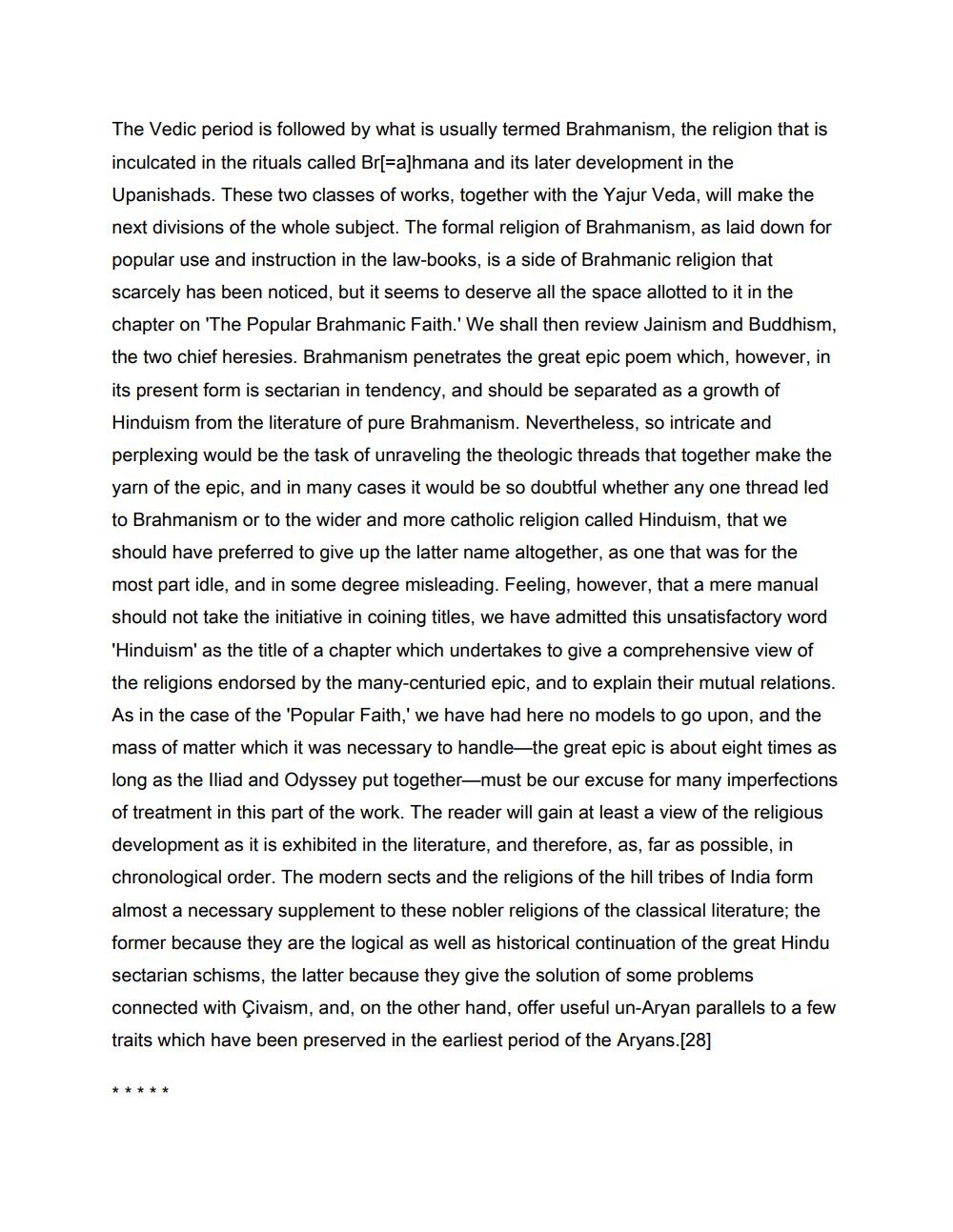________________
The Vedic period is followed by what is usually termed Brahmanism, the religion that is inculcated in the rituals called Br[=a]hmana and its later development in the Upanishads. These two classes of works, together with the Yajur Veda, will make the next divisions of the whole subject. The formal religion of Brahmanism, as laid down for popular use and instruction in the law-books, is a side of Brahmanic religion that scarcely has been noticed, but it seems to deserve all the space allotted to it in the chapter on 'The Popular Brahmanic Faith.' We shall then review Jainism and Buddhism, the two chief heresies. Brahmanism penetrates the great epic poem which, however, in its present form is sectarian in tendency, and should be separated as a growth of Hinduism from the literature of pure Brahmanism. Nevertheless, so intricate and perplexing would be the task of unraveling the theologic threads that together make the yarn of the epic, and in many cases it would be so doubtful whether any one thread led to Brahmanism or to the wider and more catholic religion called Hinduism, that we should have preferred to give up the latter name altogether, as one that was for the most part idle, and in some degree misleading. Feeling, however, that a mere manual should not take the initiative in coining titles, we have admitted this unsatisfactory word "Hinduism' as the title of a chapter which undertakes to give a comprehensive view of the religions endorsed by the many-centuried epic, and to explain their mutual relations. As in the case of the 'Popular Faith,' we have had here no models to go upon, and the mass of matter which it was necessary to handle—the great epic is about eight times as long as the lliad and Odyssey put together-must be our excuse for many imperfections of treatment in this part of the work. The reader will gain at least a view of the religious development as it is exhibited in the literature, and therefore, as, far as possible, in chronological order. The modern sects and the religions of the hill tribes of India form almost a necessary supplement to these nobler religions of the classical literature; the former because they are the logical as well as historical continuation of the great Hindu sectarian schisms, the latter because they give the solution of some problems connected with Çivaism, and, on the other hand, offer useful un-Aryan parallels to a few traits which have been preserved in the earliest period of the Aryans.[28]
*
*
**
*




